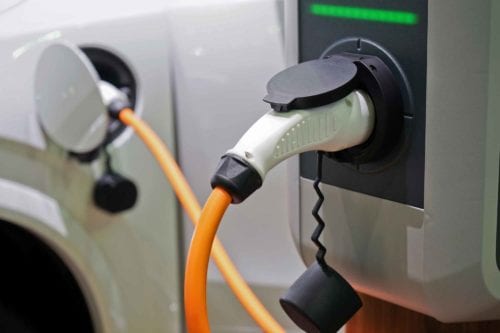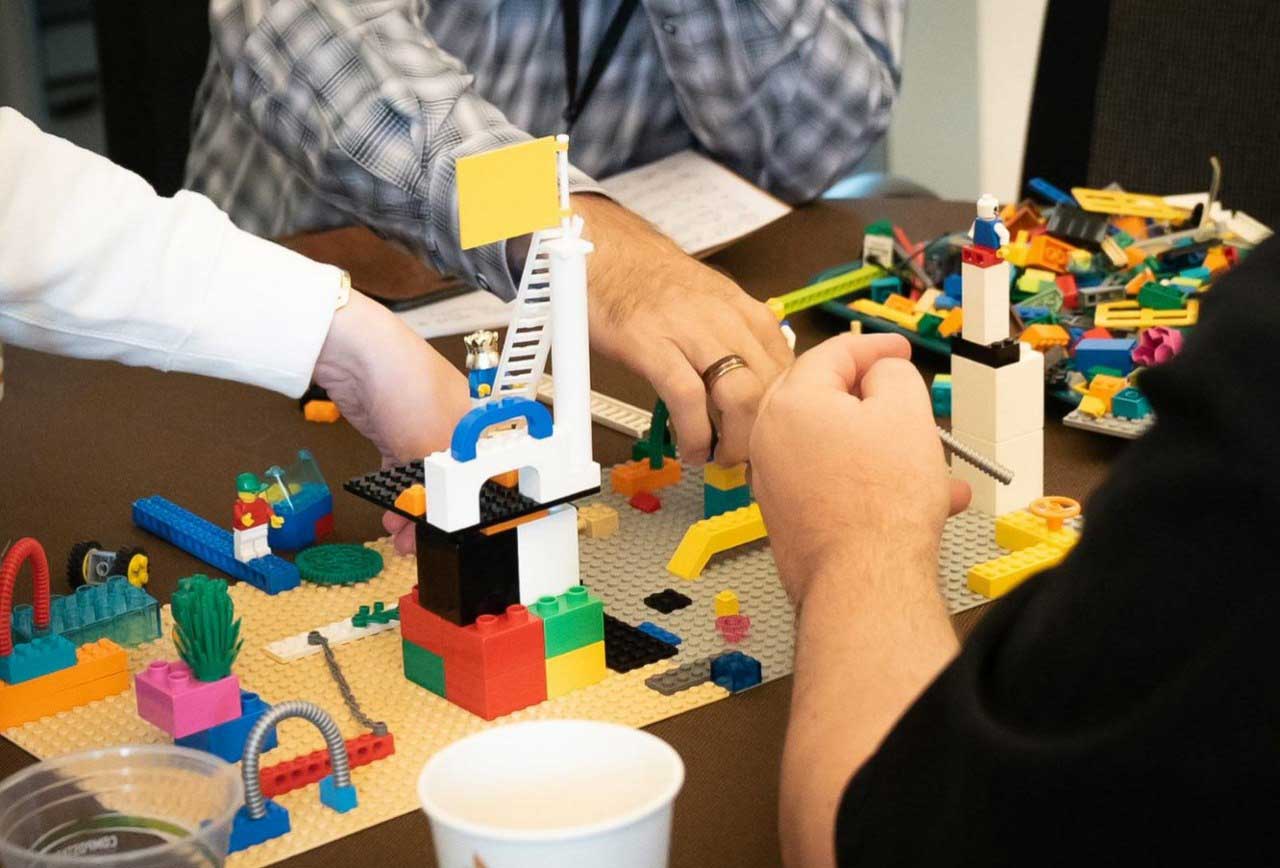
Decarbonizing Urban Mobility
Explorations with Clean Public Transit
The past year has seen electric vehicle sales smashing records, transit agencies across the country placing orders for electric buses, utilities and regulators tackling tough questions around charging infrastructure, and governments and the private sector rolling out several long-distance public charging corridors that span the United States. However, a carbon-free mobility system still remains a distant vision. Why? Because overcoming many of the complex barriers involved requires a diverse set of stakeholders with competing priorities to come to a common understanding of the problems, align on a vision for the future, and unlock transformative solutions with creativity and design thinking.
Public transit will play a critical role in the carbon-free mobility system of the future. It is well understood that the most efficient way to move people through a city is on mass transit. An easy, seamless, and consistent experience is one of the keys to unlocking greater transit ridership. And although transit is a very efficient means of moving people, most buses worldwide burn diesel, generating not only carbon emissions but also significant local air quality pollutants. Electrifying buses presents a major opportunity to curb pollution of all kinds. RMI’s Mobility Innovation Lab (MIL) provides the platform to reduce the barriers to doing so.
This post is the second in a three-part series providing a snapshot of the project teams at the 2019 MIL Project Accelerator (the first blog is available here). This piece focuses on advancing public transportation through increased ridership and cleaner vehicles.
City of Boulder—Going Further Together: Accelerating Bus Fleet Electrification through Shared Charging
The City of Boulder, Colorado, led a team to tackle the challenge of bus electrification. Boulder has committed to reducing greenhouse gas (GHG) emissions by at least 80 percent below 2005 levels by 2050. To help achieve this goal, Via, which operates the city’s HOP bus route, recently received funding to purchase four new electric buses, bringing its total e-bus count to five. Down the street, Boulder Valley School District (BVSD) recently leveraged grant money to purchase a new battery-electric school bus that will begin servicing routes in early 2020. And across town, the University of Colorado (CU) is in the midst of drafting its Transportation Master Plan, which aims to, among other things, establish the university’s vision for a sustainable transportation system that helps meet its climate commitment of an 80 percent GHG reduction by 2050. As part of this effort, CU is also considering e-buses.
Electric buses can cost almost twice as much as traditional diesel buses, making procurement of them economically challenging without grant support, and charging infrastructure can also be a major expense. In addition, Boulder’s local utility, Xcel Energy, has a rate structure that can make it costly to charge buses because of the high power levels required—a challenge that nearby Denver recently experienced firsthand. However, Colorado may soon see some relief from the financial burden of charging infrastructure build-out. A recently introduced state Senate bill would allow Xcel and other Colorado utilities to invest in and earn a return on “make ready” infrastructure, including any necessary upgrades to transmission and distribution lines, transformers, conduits, and panels.
But in 2019, the City of Boulder, Via, BVSD, and CU all face the same infrastructure, rate design, and vehicle cost challenges, and would like to minimize these costs as much as possible. At MIL, they came together with industry experts from National Car Charging (which provided charging infrastructure and procurement expertise) and Microgrid Labs (which provided infrastructure rightsizing and microgrid expertise) to work toward a novel solution—what if they were able to minimize costs by sharing them?
The diverse group of stakeholders focused on how they could coinvest in shared charging stations to reduce overall costs. They found potential for a shared charging infrastructure hub and were able to discuss technological specifications, operational constraints, location criteria, potential funding sources, business models, and community co-benefits. This intense collaborative effort laid the groundwork for a concrete action plan for future work together.
As team member Namit Singh, with Microgrid Labs, emphasized, “The organizations had different agendas to start, but as a result of the process, they are now aligned, understand each other’s needs, and are moving toward solutions together.”
Electrifying Buses in the Mountains: Taking the Dinosaur Out of VelociRFTA
The Roaring Fork Transportation Authority (RFTA) is the largest rural transit agency in the nation. Its current fleet of 100 vehicles is a portfolio of compressed natural gas, diesel hybrid, and biodiesel buses. And although electric buses have now caught the eye of RFTA, its service territory presents challenges for adopting a fully electric fleet. Variable winter and summer temperatures, changing passenger loads due to snowfall and special events, and steep road grades in the mountains create operating challenges for battery-electric buses.
This fall, RFTA will receive eight electric buses as part of a pilot program. A team composed of RFTA operations and maintenance leaders, New Flyer (the bus manufacturer), ABB (the charging infrastructure provider), Holy Cross Energy (the electric utility), and other local nonprofit and government stakeholders came together at RMI’s MIL to create holistic plans beyond the pilot phase.
At MIL, they surfaced myriad questions: Would these buses be reliable? How would drivers react? What implications does electrification have for the operations of the rest of the fleet? Do we have adequate charging, or do we need more? If so, where? How will the community react? How can this team continue working together to ensure success of the pilot? How will we know when we’re ready to move from pilot to scale? How do we pay for future buses and chargers?
The team committed to an experimental and flexible pathway forward: clarifying the scope of the pilot, developing a clear roadmap to scaling, evaluating approaches to working with various stakeholders, establishing project team responsibilities, and exploring creative financing approaches for future buses and charging infrastructure (including potential on-bill financing from the electric utility).
As participant Matt Shmigelsky, with Clean Energy Economy for the Region put it: “Applying tools and process intentionally and in an environment of mutual support can generate big shifts in approach.”
moovel: Developing a Mobility Price Data Specification to Enable Seamless Access to Mobility Services
“The MIL gave us the structure and support to align on our objective and strategize the best way of tackling it, along with providing us great insights from industry leaders and the motivation to really carry this forward.”
—Amanda Gellhouse, software engineering manager, moovel (becoming REACH NOW)
The moovel-led team at the MIL was both the outlier of the workshop and the web tying all other teams together. While other teams focused on aspects of electrification, the moovel team set out to develop a Mobility Price Data Specification that would enable seamless, consumer-friendly access to all mobility services; expand market access; and increase data sharing. The specification would describe prices for various modes of transportation, particularly transit, likely as an extension to the existing and widely adopted General Transit Feed Specification (GTFS). Many transit agencies currently use the GTFS format to publish data about the location and timing of vehicles, but few, if any, use a common format for publishing data related to fares.
The challenge the team addressed was well illustrated by the Lego model they constructed during a facilitated session on the second day of the workshop: Randy Rider—a traveler simply trying to get from point A to point B—was confronted with a confusing maze of transit options with unclear fare structures, with no easy way of linking various modes of transportation to reach his destination. He ultimately decided that the inconvenience factor of planning, booking, and paying for transit was too high, so instead, he got in his personal vehicle and drove himself.
Increasing vehicle sharing and boosting transit ridership—in addition to promoting electrification—are critical components of reducing emissions from the transportation sector. Randy Rider’s experience is all too common. Until transit and shared options are as—if not more—convenient as private vehicles, individuals will continue to choose to drive their own cars, creating traffic jams and leading to higher per-person emissions. The moovel team feels that open ticketing and a Mobility Price Data Specification are vital to growing ridership on shared services—including transit—and ensuring that access to mobility is seamless rather than laborious.
Through a series of facilitated activities and feedback from expert faculty members from across the United States, the team worked to identify barriers and challenges preventing the current specification (GTFS for fares) from being widely adopted and to design a roadmap for developing and promoting adoption of the enhanced specification. The team left the workshop with enthusiasm and a renewed commitment to building a future in which Randy Rider can conveniently ride and pay for transit anywhere in the country—a factor that would convince him to leave his personal vehicle at home.
Transit agencies, municipalities, school districts, and others should pay attention to developments involving Boulder, RFTA, and moovel in 2020 and beyond. Each could become a useful case study and framework for interagency collaboration and mobility services in both rural and urban communities.
You can read blog number one in this series here. Tune in to blog number three for a deep dive on MIL’s Trenton, New Jersey, and Vote Solar teams.


